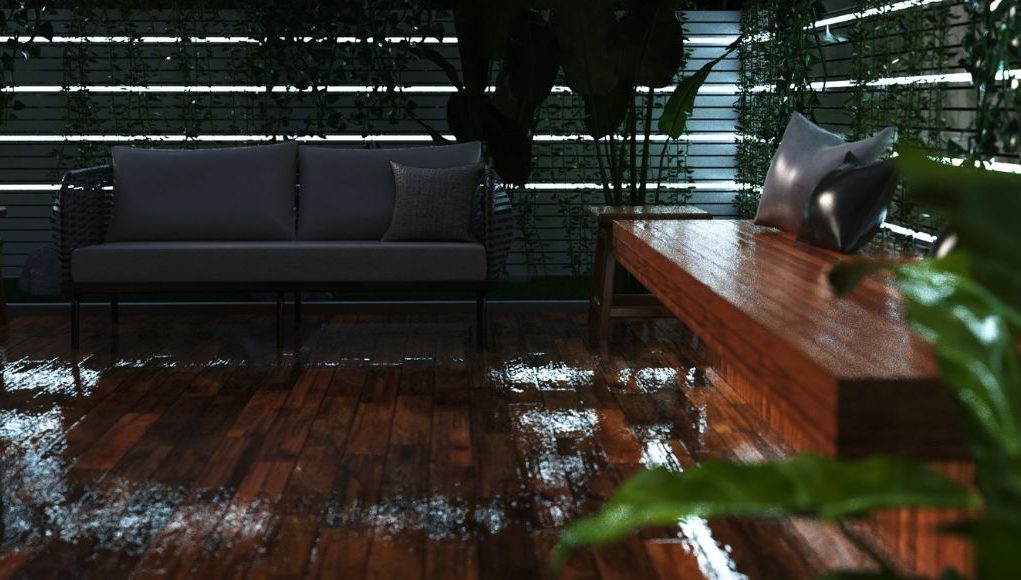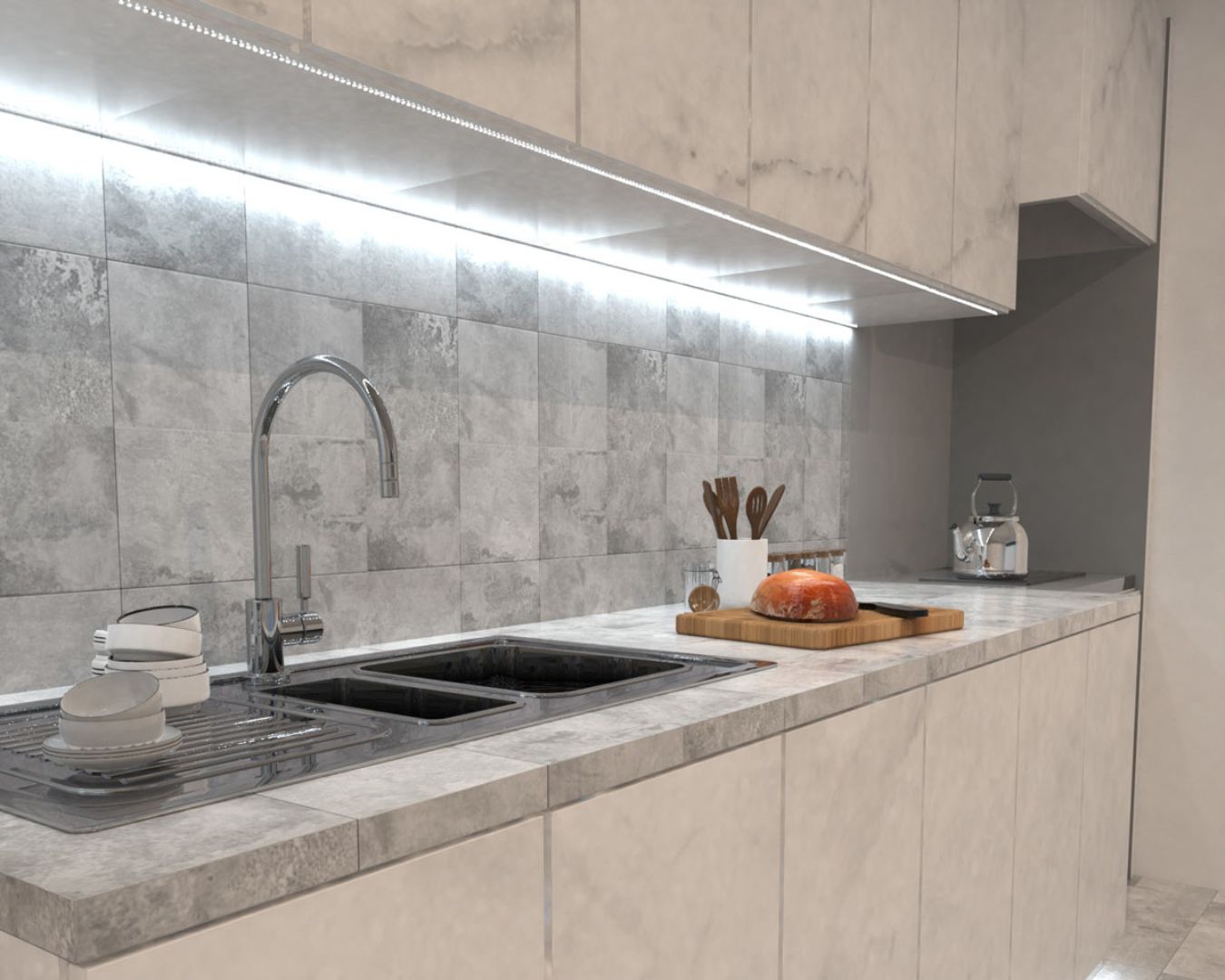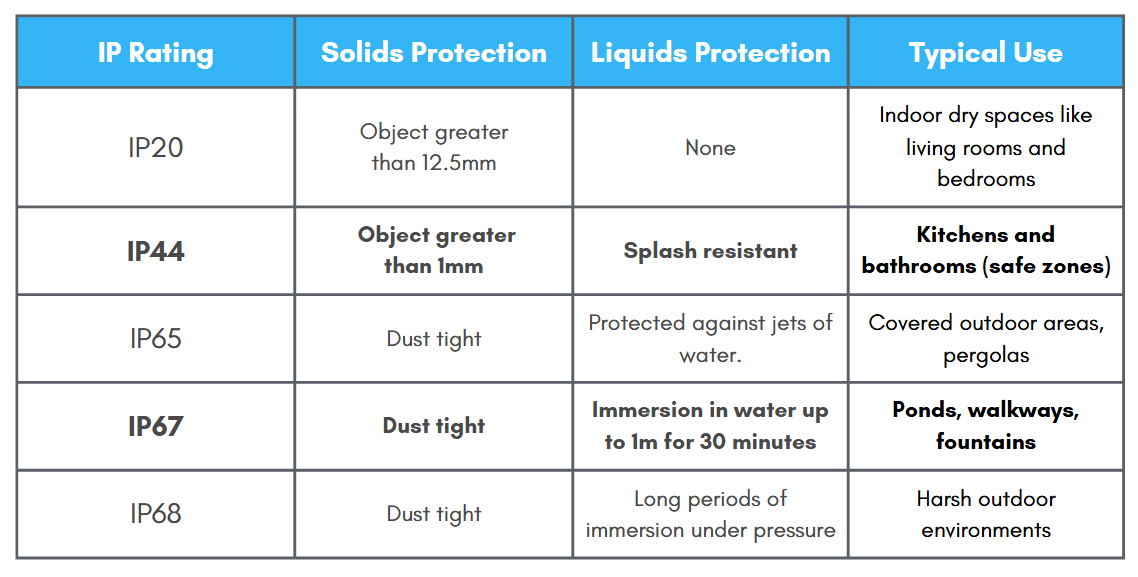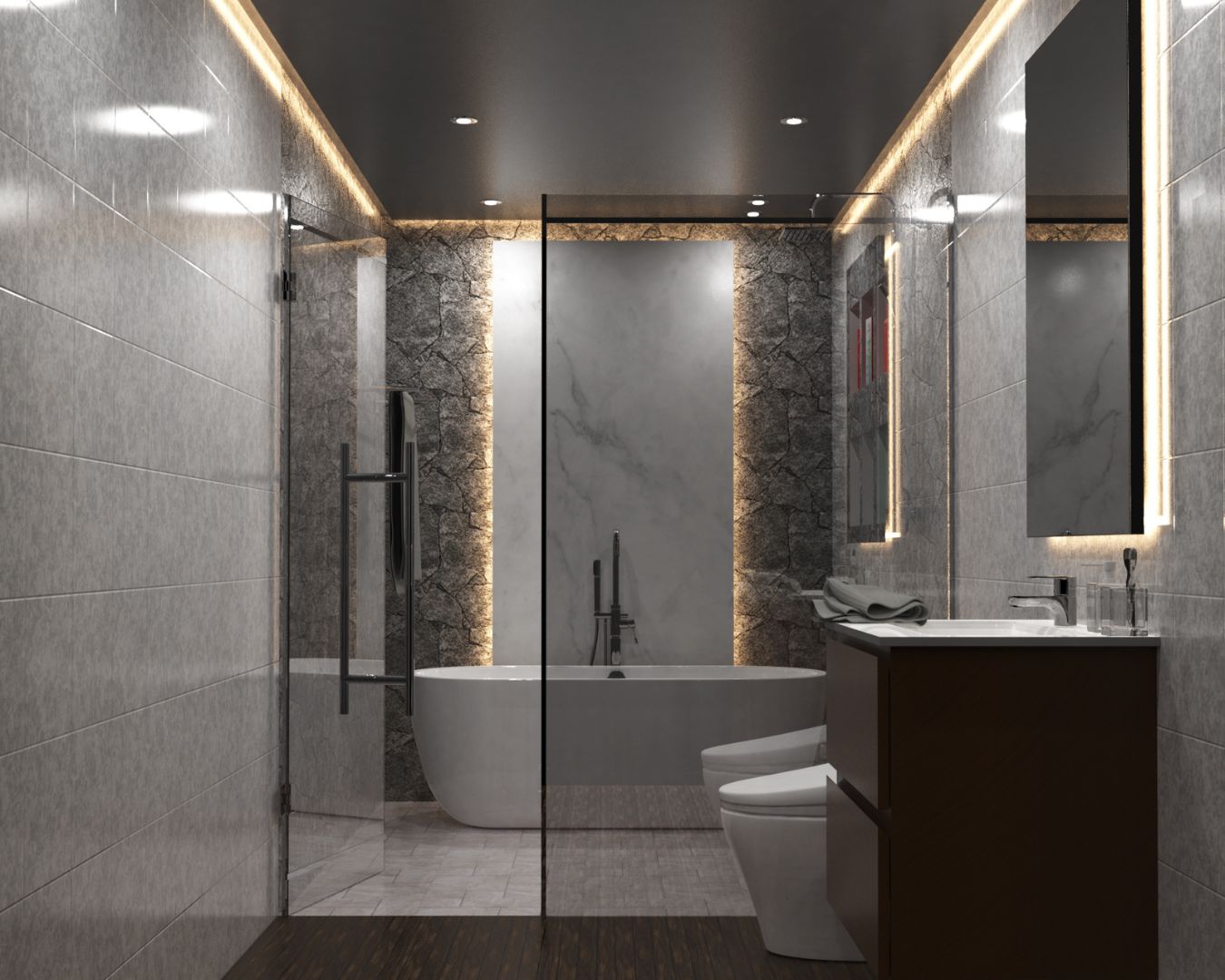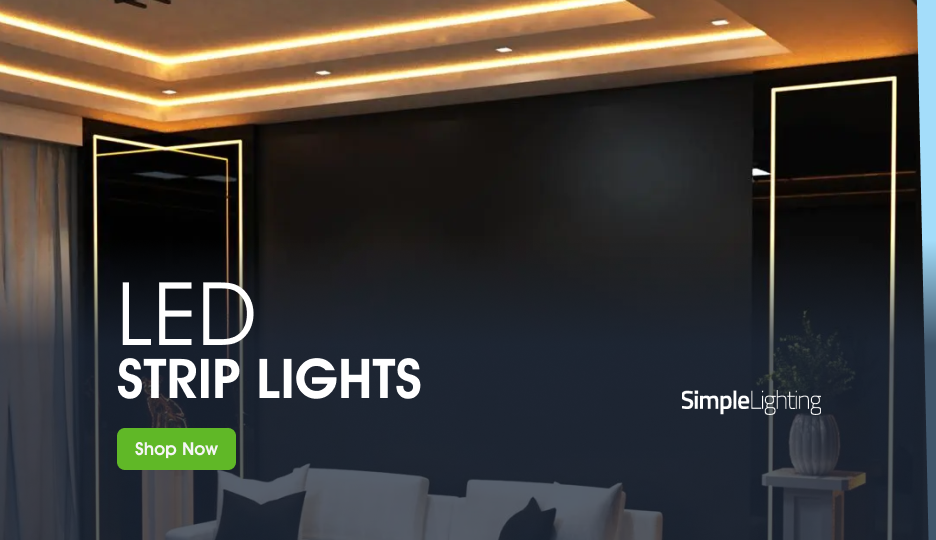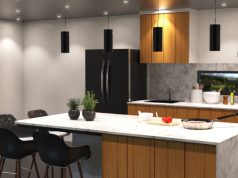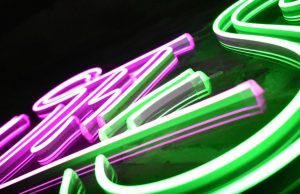So you’ve finally decided to use LED strip lights for your next lighting project.
But wait! You’re illuminating a cosy bathroom? Outlining a garden decking? And creating a welcoming glow along your outdoor path?
LED strip lights might be one of the most flexible and stylish ways to enhance your space, but when water or moisture enters the picture, you need to have the right knowledge.
A beautiful outdoor lighting project can be ruined by one overlooked detail: the wrong IP rating.
You have to remember that not all LED strip lights are created equal.
The strip that’s perfect for your living room shelves? It won’t survive a rainy patio or a steamy shower enclosure.
That’s why in this post, we’ll guide you through things to consider when installing waterproof LED strips safely.
We’ll also explain what IP rating means. So that by the end of this post, you’ll know exactly which LED strip to buy, and why it matters.
Ready or not, let’s hop in.
What is IP Rating?
Let’s address the biggest elephant in the room.
Every LED light comes with an ingress protection or IP rating. This rating indicates how well a product is protected against the intrusion of solid particles (like dust) and liquids (like water).
The IP rating is always written as “IP” followed by two numbers. For example, IP20, IP44, or IP65.
These are not random numbers. Each one tells you something important:
- The first digit (0–6) shows protection against solids such as dust or dirt.
- The second digit (0–8) shows protection against liquids, primarily water.
The higher the number, the better the protection. We’ll discuss this later in more detail.
Why IP Ratings Are Crucial for LED Strip Lights
They may sound like technical details (which they are), but IP ratings help determine how safe, durable, and reliable your lighting will be in real-world conditions.
1. Safety First
Breaking news: Electricity and water don’t mix.
Choosing a high IP rating ensures that your LED strip lights are sealed properly against moisture. This prevents dangerous short circuits and corrosion. In bathrooms, for instance, regulations require specific IP ratings depending on the zone of the bathroom where you’re installing your lights.
2. Durability and Performance
If an LED strip isn’t rated for moisture but gets installed outdoors, condensation can seep in, damaging the diodes and circuits. Flickering lights? Discolouration? Total failure? You probably just did not install the right IP ratings.
3. Saving Money in the Long Run
Replacing failed strips isn’t just inconvenient; it’s costly.
Investing in the correct IP-rated LED from the start ensures long-term reliability and lower maintenance costs.
A waterproof strip with the right IP rating can last for tens of thousands of hours, maintaining brightness and colour consistency even in humid or rainy conditions.
Simply put, the right IP rating equals peace of mind.
Common IP Ratings for LED Strips and Their Uses
Here’s the thing: Not every LED strip needs to be fully waterproof.
Here’s a simple reference chart of the most common IP ratings for LED strip lights and where they fit best:
Let’s break each one down:
IP20 – For Indoor, Dry Spaces Only
Best for: Living rooms, bedrooms, offices, display cabinets, and other similar spaces.
IP20 strips are your go-to for indoor installations in completely dry environments. These are not sealed against moisture or dust, because they don’t need to be.
They offer great brightness and flexibility for ambient or decorative lighting.
Use them to light under shelves, behind TVs, or along ceiling coves. Basically, anywhere water isn’t an issue.
Because there’s no silicone or epoxy coating, IP20 strips are slimmer and easier to cut, making them perfect for discreet indoor designs. They’re usually cheaper too!
IP44 – Splash Resistant
Best for: Bathrooms (zones 2 and 3 only), kitchens, and utility rooms.
IP44 LED strips can handle occasional splashes and humidity, but they aren’t suitable for full water contact.
You’ll typically find these installed near sinks, mirrors, or shower areas, but always outside of direct splash zones.
IP44 LED strips are ideal for mirror backlighting or ceiling coves in bathrooms.
IP65 – Water Resistant
Best for: Covered patios, pergolas, and kitchens with steam exposure.
What’s the obvious difference between an IP65 and an IP20 LED strip light?
An IP65 LED strip has a protective silicone coating that seals it against dust and light water jets.
This makes it suitable for outdoor covered areas where occasional rain or moisture may reach it, but it’s not meant for full water submersion.
They’re also great in kitchens, especially above counters or under cabinets where steam from cooking is expected. The coating makes them easy to clean and durable against grease and condensation.
IP67 & IP68 – Fully Waterproof
Best for: Garden decks, ponds, walkways, and exposed outdoor areas.
These are the highest levels of protection available for LED strips (and generally any lighting fixture).
Both IP67 and IP68 models are completely dustproof and can withstand immersion in water.
- IP67: Can be submerged temporarily up to 1 metre.
- IP68: Can handle continuous submersion beyond 1 metre.
In other words, use these where rain, puddles, or even submersion are expected.
These strips are built with encapsulated silicone or epoxy resin. Meaning? Every diode and connector is sealed away from the elements.
When aesthetics and durability matter most outdoors, IP67/68 waterproof LED strips are your safest choice.
It’s either that or no lights at all!
Choosing the Right Waterproof LED Strip for Your Space
Alright, now that you have a better understanding of IP ratings, the next step is applying that knowledge to your home.
Here’s how to choose wisely for every environment:
Bathrooms
As hinted earlier, bathrooms are divided into safety zones, each requiring specific IP ratings:
- Zone 0: Inside the bath or shower. Requires an IP67 or IP68 rating with low voltage (12V).
- Zone 1: Above the bath or shower tray up to 2.25m from the floor. Requires a minimum of an IP65 rating.
- Zone 2: Within 0.6m horizontally from water sources. IP44 minimum.
- Zone 3 or Outside Zones: Since there’s no specific IP rating required, you can use IP20 lighting. But the safe bet is still an IP44 strip light.
Check out Bathroom Lighting: IP Ratings, Zones, and Brightness for more details on bathroom lighting zones.
Outdoor Spaces
Outdoor environments are unpredictable. Okay, maybe it’s not THAT unpredictable.
But still, you wouldn’t want to always be rushing home to remove your garden lights every time there’s a light drizzle, would you?
That’s where IP67 and IP68 LED strips come into play.
Use them for:
- Decking edges to highlight steps or borders.
- Pathways and garden walls for ambient night lighting.
- Pergolas and gazebos for warm, welcoming illumination.
If the installation is covered but not exposed directly to rainfall, an IP65 strip may be sufficient.
But if we’re talking about exposed or ground-level areas, you’ll never go wrong by going for fully waterproof protection.
Kitchens and Other Moisture-Prone Interiors
Steam, condensation, and splashes are common in kitchens and utility rooms.
Choose IP44 or IP65 LED strip lights under cabinets or near sinks for long-lasting performance.
For areas with minimal moisture exposure, such as accent lighting above cabinets or shelves, IP20 strips remain a suitable and cost-effective option.
Other Key Factors to Consider
Brightness (Lumens per metre): Brighter isn’t always better. Also consider the mood. Around 400–600 lumens per metre is ideal for soft accent lighting, while 1000+ lumens per metre works for task areas.
Colour Temperature: The colour of your light can significantly affect the mood and function of the space. Warm white (2700K–3000K) creates a cosy ambience, while cool white (4000K–6000K) enhances visibility and modern aesthetics.
Flexibility and Mounting: Waterproof strips (especially IP67 and IP68) can be slightly less flexible due to their protective casing. Ensure your chosen strip fits the curves of your design profile.
How to Install Waterproof LED Strips Safely
Even the best lights can fail if not installed properly. LED strip lights are no different.
Here’s how to get the installation right:
1. Use Correct Connectors and Sealants
Cutting the strip compromises its IP rating. That’s why it’s always recommended to use IP-rated connectors and ensure any cut ends are sealed with silicone end caps and adhesive.
Even a small gap can allow water to seep in and damage the strip internally.
2. Mount in Aluminium Profiles
An aluminium LED profile isn’t just for looks. It safeguards your strip lights against external forces or impacts that could potentially cause damage, and with an IP rating of at least IP65, it can keep your strip lights safe from water ingress too.
Aluminium profiles also serve as heat sinks, helping prolong the life of your LED strips. The diffusers built into the profile also soften the light, creating a softer, more professional finish.
It’s basically an all-in-one protection. Again, just make sure to use one with a high IP rating.
3. Check Power Supplies and Drivers
Match your LED strip’s voltage (usually 12V or 24V) with a compatible waterproof driver (should also be 12V or 24V). Keep the driver location dry, or better yet, choose a sealed IP67 or IP68-rated power supply.
Yes, the strip light itself should not be the only one with a high IP rating.
4. DIY vs Professional Installation
You can easily DIY a simple under-cabinet or mirror lighting, especially with complete LED strip lighting kits.
But for outdoor wiring, bathroom zones, or large outdoor installations, employing the help of professional electricians ensures compliance with UK safety standards and building regulations.
Remember: A well-installed waterproof LED system not only looks sleek but performs reliably year-round.
Benefits of Waterproof LED Strips Outdoors
So, why use LED strips with high IPs?
1. Designed to Withstand All Weather
The UK’s climate is unpredictable. But high-quality waterproof LED strips are made to withstand it. Freezing winters and summer showers? These silicone-covered lights ensure consistent brightness and longevity.
2. Safety in Wet Environments
Waterproofing your lights prevents electrical hazards. These LED strips are designed to keep moisture away from the circuitry. This makes them perfect for walkways, patios, and garden features, where safety and durability go hand in hand.
3. Versatile Design Possibilities
Now you’re not just limited to indoor decor. Level up your outdoor evening gatherings, create an unforgettable garden tour, or highlight architectural features, all just by adding a few weatherproof light strips.
4. Energy Efficiency and Cost Savings
Like all LED lighting, waterproof strips consume up to 85% less energy than halogen or incandescent lights. Combine that with weather resistance, and you get a lighting solution that’s both eco-friendly and economical.
Bright Lighting That Weathers It All
Creating a safe, long-lasting, and visually stunning lighting system all hinges on choosing the right IP rating.
The IP rating of your lights depends on where you’re installing them.
So, whether you’re upgrading your bathroom or you just want to brighten up your garden or outdoor pathways, always make sure that your LED strip lights are built for the environment they’ll face.
Safety and reliability should always precede beautiful illumination. Having the right waterproof LED strip light makes that possible.
Here at Simple Lighting, we offer a wide range of outdoor LED strip lighting designed to last. Explore our latest collection online now!


